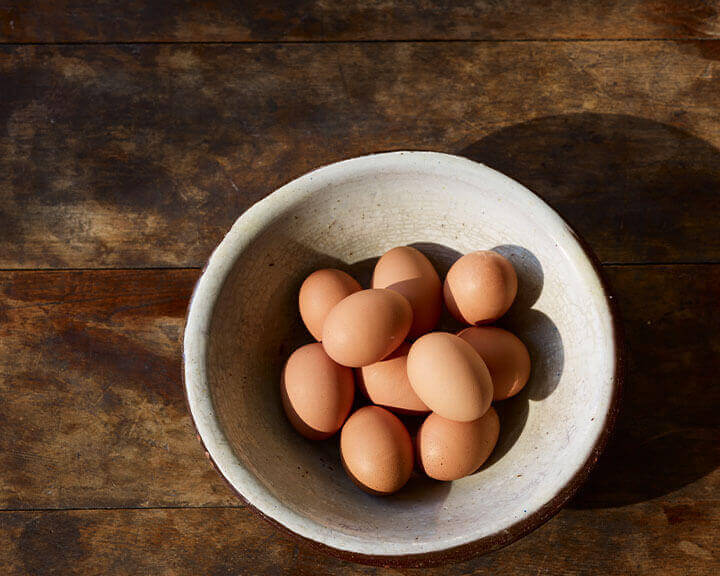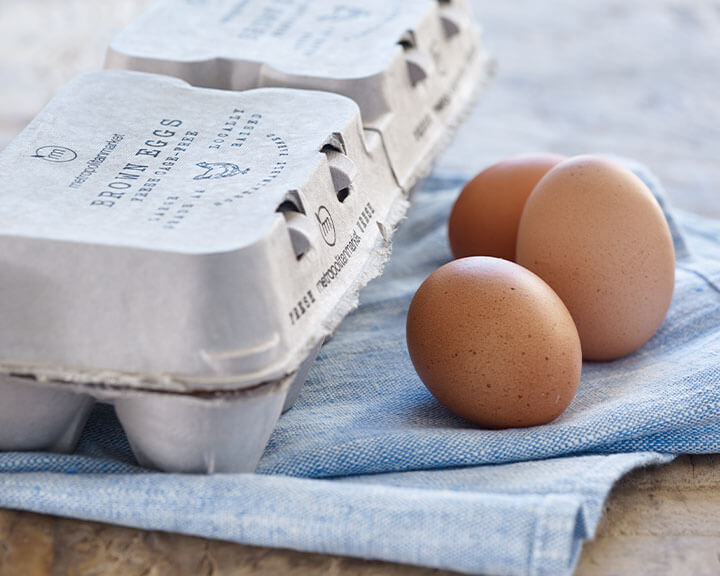
Eggs, they’re a powerful protein, packed with essential vitamins—the darling of the Sunday brunch crowd and touted by many as the perfect food, a superfood, in fact.
But how do you select a good egg? How do you navigate the dizzying plethora of egg types out there—brown, white, free-range, organic…? Gah! And, once you get those good eggs home, what's the best way to store them and test for freshness? Here‘s a handy round-up of eggs-ential information for those who want to be in the know about all things eggs.
Color
The breed of hen determines the color of an egg, and there is negligible nutritional difference between the colors.
USDA Grade mark
There are three consumer grades for eggs: Grade AA, A, and B. The grade is determined by the interior quality of the egg, its appearance, and the condition of the eggshell, with Grade AA being the best. The standard egg used in recipe testing is Large AA, where the yolk and the white weigh about one ounce each.
Cage-Free
Cage-Free eggs must come from hens that have unlimited access to food and water and the freedom to roam within their area during the laying cycle.
Free-Range
Free-Range eggs must come from hens housed in an area that allows for unlimited access to food and water, the freedom to roam within their area, AND continuous access to the outdoors during their laying cycle.
Pasture-Raised
Pasture-raised hens are each given 108 square feet of roaming room, typically from early morning until nightfall. The newest form of pasture-raised is "mobile pasture" in which farmers use mobile chicken coops that are rotated through fresh grass every week.
Pasture-raised hens consume a diet of feed, grass, bugs, and worms.
Organic
Organic eggs come from uncaged hens that are fed an organic diet of feed produced without pesticides or fertilizers. Metropolitan Market offers Grade AA organic eggs from hens that enjoy a free-range lifestyle at a local, fifth-generation farm that sticks to locally-made vegetarian feed.
Omega-3
Eggs of this variety come from hens whose feed is supplemented with an omega-3 source such as flax seed. They lay eggs that are higher in omega-3 fats.
How to Shop
For the freshest eggs, check out Metropolitan Market organic eggs or our U-Pick eggs, both brought to the store directly from a local, fourth-generation family farm.
Pop the lid and check for cracks before purchasing.
How to Store
Eggs in the U.S. are required to be washed before they arrive at the store. Washing removes the cuticle of the eggs, allowing oxygen, odors, and bacteria to get inside. Therefore, store-bought eggs need to be refrigerated.
The best way to store your eggs is in the original cushy carton it comes in, flat side up. The carton padding reduces the chance of breakage and prevents the eggs from absorbing refrigerator odors.
The best placement for the carton, is mid-fridge, back of the shelf. That is generally where the fridge temp remains most constant.
Test for Freshness
Float Test: Fill a bowl of water that is twice as deep as the egg is tall. If the egg sinks to the bottom and turns on the side, it’s very fresh.
If the egg sinks to the bottom but tilts up at an angle or stands on end, it’s a bit older but still good to eat.
If the egg flat out floats to the top, toss it. It is no longer a good egg.
TIPS:
Super fresh eggs are best for frying because the whites will hold their shape better, making for the prettiest presentation.
Slightly older eggs are great for baking, making omelets, and boiling. Older eggs have taken in more air. This creates a bit of space just underneath the shell, making them easier to peel.
Visual Check: Egg yolks should stand proud while the whites should be slightly opaque, firm, and not runny.
Hope this helps on your hunt for a good egg, and who doesn’t want that, right? Eggs-actly!


